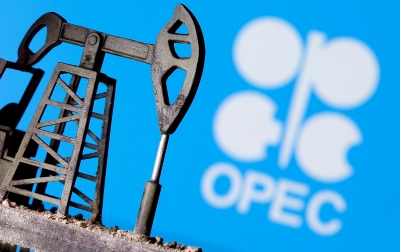
OPEC nations have agreed to cut oil production by 2 million barrels a day. Following OPEC’S announcement of supply reduction, crude prices have been soaring across the world. But what is OPEC and what are its functions? Let’s find out.
OPEC is an organisation of countries that produce oil, with OPEC being the abbreviation of the Organization of the Petroleum Exporting Countries.
Set up in 1960
An intergovernmental organisation, OPEC was created at the Baghdad Conference held in Iraq in September 1960, by Iran, Iraq, Kuwait, Saudi Arabia, and Venezuela. The establishment of OPEC took place against a background of great change in the world with decolonisation and the rise of many independent countries in the developing world.
Headquartered in Vienna, Austria, from 1965 (earlier it was in Geneva), the OPEC cartel is responsible for setting the price of oil on the world market and managing the supply. In other words, it develops a common petroleum supply policy for its member states and foxes price. This is to avoid fluctuations in oil price that might affect the economies of oil producing as well as purchasing countries. According to the OPEC website, “It adopted a Declaratory Statement of Petroleum Policy in Member Countries in 1968, which emphasised the inalienable right of all countries to exercise permanent sovereignty over their natural resources in the interest of their development.”
Its head and members
OPEC refers to a group of 13 of the world’s major oil-exporting countries- Algeria, Angola, Equatorial Guinea, Gabon, Iran, Iraq, Kuwait, Libya, Nigeria, the Republic of Congo, Saudi Arabia, the United Arab Emirates, and Venezuela. Its membership is to any country that is a substantial exporter of oil Haitham Al Ghais of Kuwait is the current Secretary-General of OPEC.
If you wonder what OPEC+ is, it is OPEC plus other oil producing countries such as Azerbaijan, Bahrain, Brunei, Kazakhstan, Malaysia, Mexico, Oman, Russia, South Sudan, and Sudan. In 2016, when oil prices were low, OPEC joined these 10 oil producers to create OPEC+ to have greater control over the global crude oil market. Here it is important to note that some of the largest oil producers in the world, including China, and the United States, are not members of OPEC.
Impact of the cut
Demand for oil dropped drastically during the COVID pandemic. Hence OPEC countries decided to cut down production to prevent a supply surplus. Besides there was a price war going on between Russia and Saudi Arabia, leading to a slump in oil prices. However, the Russia-Ukraine conflict which broke out in February pushed up oil prices around the world, raising concerns that the sanctions against Russia could lead to an oil shortage. The Saudi- and Russian-led production cut which will take effect in November 2022, will further hike petrol prices. The idea behind cutting production seems to be to boost demand by lowering supplies. This energy crisis is also driving up global inflation. The production cut threatens a global economy which is already destabilised by the Russia-Ukraine conflict.
DID YOU KNOW?
- Over 80% of crude oil reserves are located in OPEC countries.
- OPEC nations produce around 30% of the world’s crude oil and OPEC+ group produces 40%.
- Saudi Arabia is the largest single oil producer within OPEC producing more than 10 million barrels a day.
- Russia, which is not a member of OPEC also produces more than 10 million barrels of oil a day.
Picture Credit : Google




